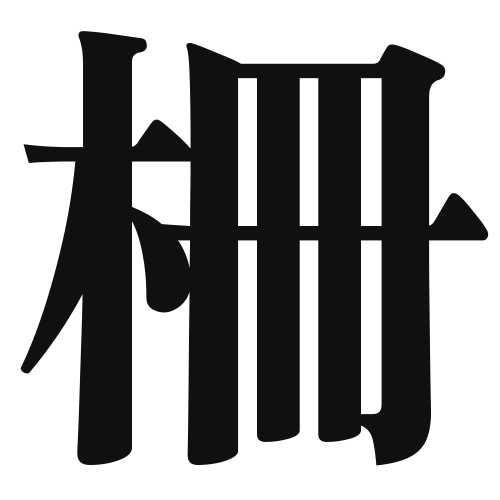1. Overview of Meaning
The kanji “柵” (saku) means “fence” or “barrier.” It refers to a structure that encloses or protects an area, often made of wood or metal.
2. Formation and Radicals
Formation of the Kanji: The kanji “柵” is a compound character (会意文字) that combines elements to convey its meaning. It consists of the radical for “tree” (木) and the character “塞” (saku), which means “to block” or “to stop.” This combination suggests a barrier made from trees or wood.
Radical: The radical of “柵” is 木 (tree), indicating its connection to wooden structures.
3. Examples of Usage
Common Words and Phrases:
- 柵 (saku) – fence
- 柵を作る (saku o tsukuru) – to build a fence
Example Sentence in Daily Conversation:
「庭に柵を作りたいです。」
(“I want to build a fence in the garden.”)
4. Synonyms and Antonyms
Similar Kanji:
- 障壁 (shōheki) – barrier; this term is broader and can refer to any kind of obstruction, not just physical fences.
- 囲い (kakoi) – enclosure; this term emphasizes the idea of surrounding an area.
Antonyms:
- 開放 (kaihō) – openness; this term refers to the absence of barriers or restrictions.
5. Cultural and Historical Background
Connection to Japanese Culture: Fences and barriers have significant cultural importance in Japan, often symbolizing protection and privacy in traditional gardens and homes.
Proverbs and Idioms:
「柵を越える」 (saku o koeru) – “to overcome a barrier,” which can be used metaphorically to describe overcoming obstacles in life.
